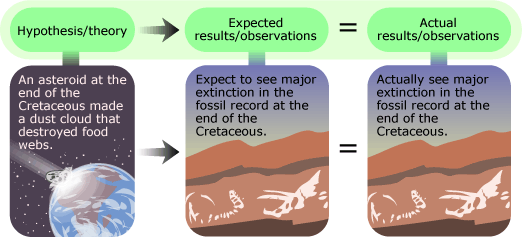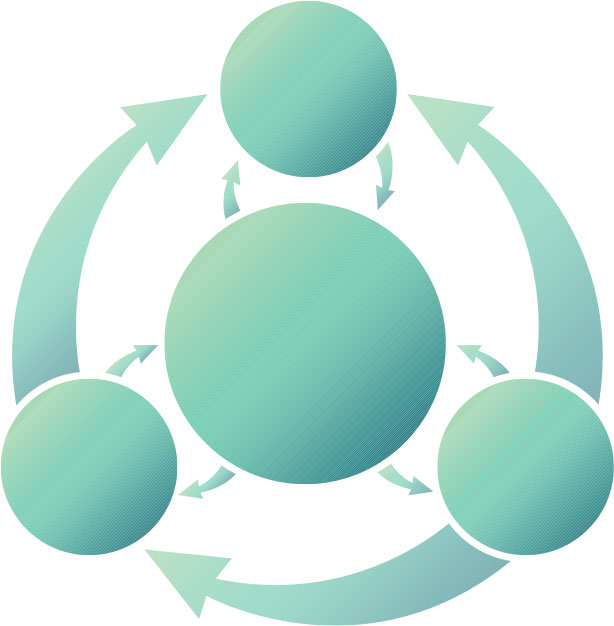Found 181 images:
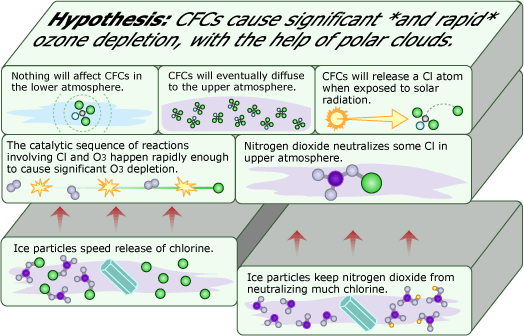
Building the argument for rapid ozone depletion
Rowland, Solomon, and Garcia's work suggested a modification to the original hypothesis: CFCs cause significant ozone depletion - and they do it much more rapidly with the help of polar…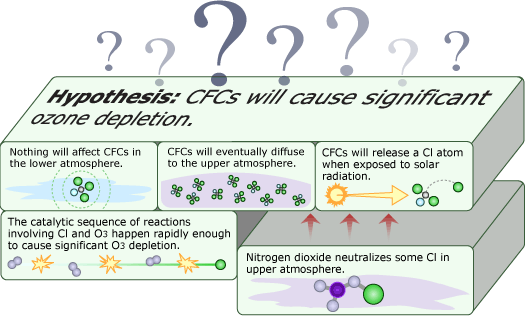
Building the argument for ozone depletion
Researchers needed to incorporate nitrogen dioxide into the hypothesis - but they weren't sure how it would affect the expectations generated by the hypothesis. Would we still expect to see…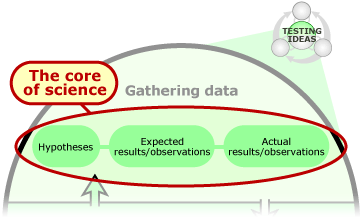
Core of science
Testing ideas with evidence to build scientific arguments forms the core of science.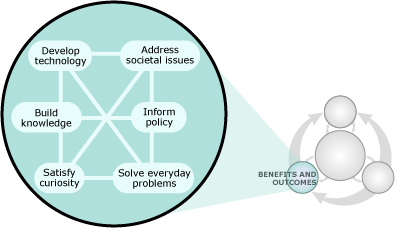
Complexity of the process (4 of 4)
The process of science is intertwined with society.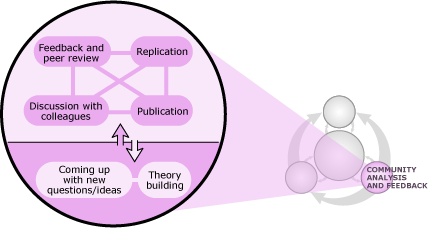
Complexity of the process (3 of 4)
The scientific community helps ensure science's accuracy.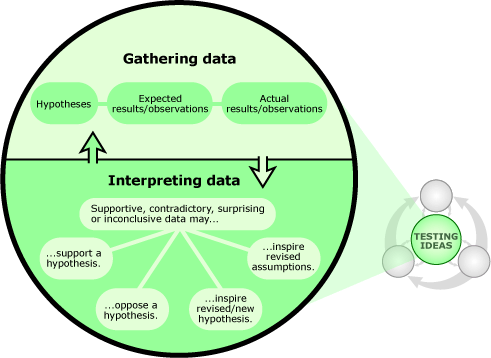
Complexity of the process (2 of 4)
Scientific testing is at the heart of the process.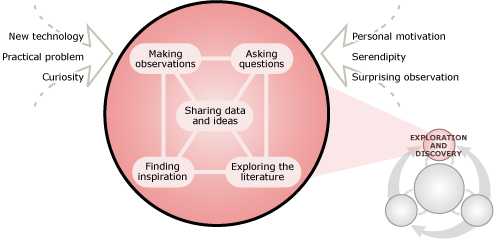
Complexity of the process (1 of 4)
There are many routes into the process.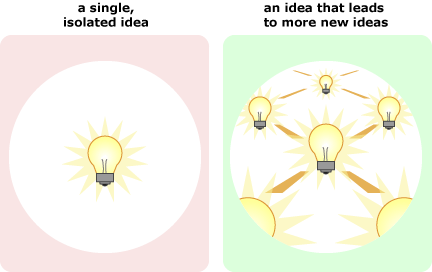
Competing ideas (5 of 5)
Scientists are more likely to put their trust in ideas that generate more new ideas.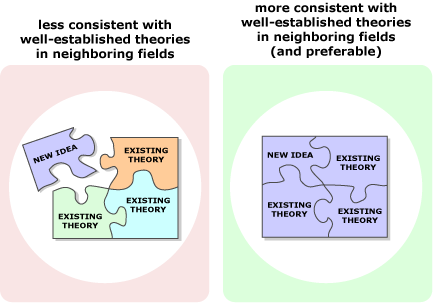
Competing ideas (4 of 5)
Scientists are more likely to put their trust in ideas that are more consistent with well-established theories in neighboring fields.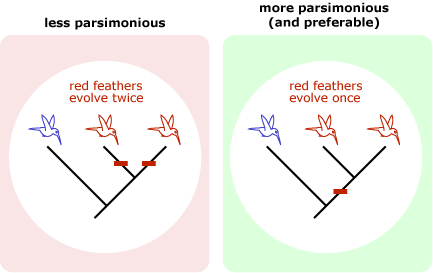
Competing ideas (3 of 5)
Scientists are more likely to put their trust in ideas that are more parsimonious.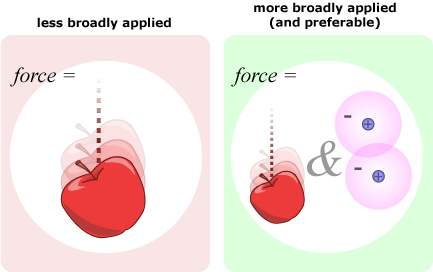
Competing ideas (2 of 5)
Scientists are more likely to put their trust in ideas that can be more broadly applied.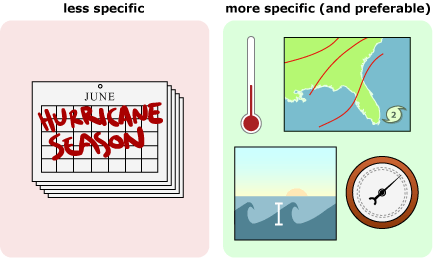
Competing ideas (1 of 5)
Scientists are more likely to put their trust in ideas that generate more specific expectations (i.e., are more testable).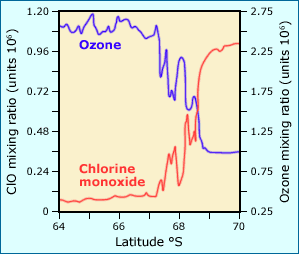
Comparing ozone and chlorine monoxide levels
A plot of chlorine monoxide and ozone concentrations from data collected by an aircraft passing through the Antarctic ozone hole. Outside the hole (left side of graph), ozone levels are…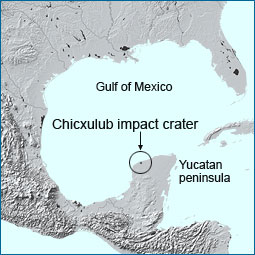
Chicxulub crater
The map shows the location of the Chicxulub impact crater, the site of a massive asteroid impact.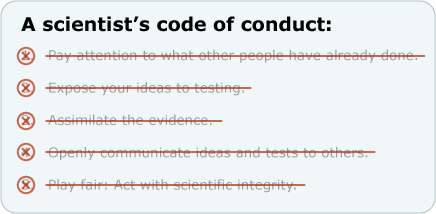
Checking the code of conduct (6 of 6)
Checking the scientist's code of conduct: Step 6.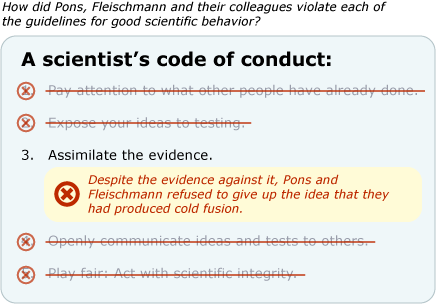
Checking the code of conduct (5 of 6)
Checking the scientist's code of conduct: Step 5.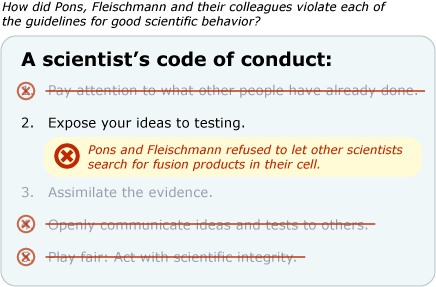
Checking the code of conduct (4 of 6)
Checking the scientist's code of conduct: Step 4.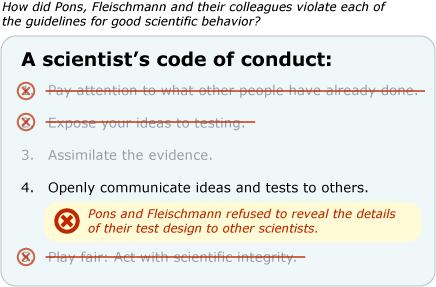
Checking the code of conduct (3 of 6)
Checking the scientist's code of conduct: Step 3.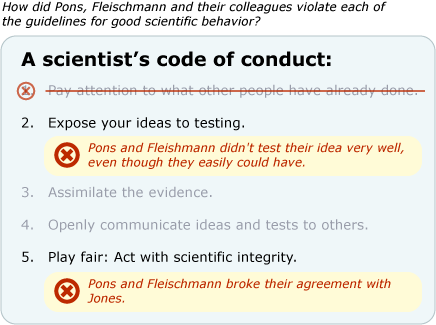
Checking the code of conduct (2 of 6)
Checking the scientist's code of conduct: Step 2.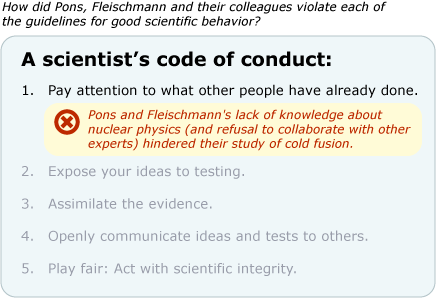
Checking the code of conduct (1 of 6)
Checking the scientist's code of conduct: Step 1.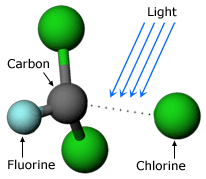
CFC molecular structure (2 of 2)
CFCs like trichlorofluoromethane (CCl3F) break down when exposed to solar radiation in the upper atmosphere, freeing up chlorine atoms.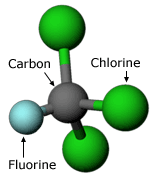
CFC molecular structure (1 of 2)
The molecular structure of trichlorofluoromethane (CCl3F), a banned CFC once widely used as a refrigerant.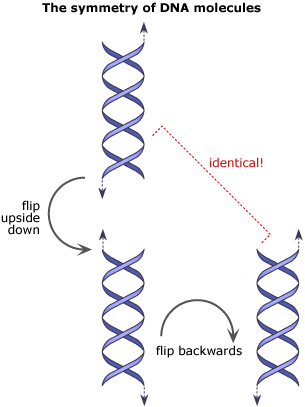
DNA symmetry II
Watson and Crick realize that since DNA crystals could be flipped upside down and backwards, and still look the same.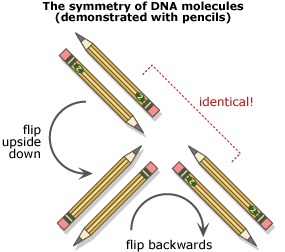
DNA symmetry
This graphic demonstrates the symmetry of DNA using pencils.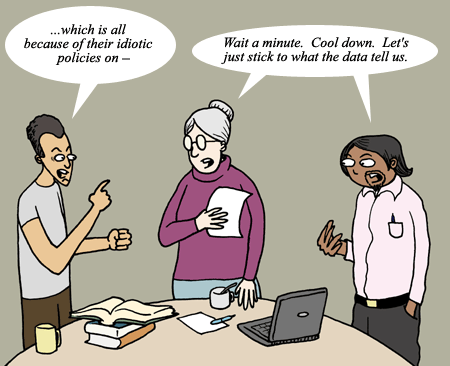
Diversity of perspectives (3 of 3)
Diversity helps to balance bias.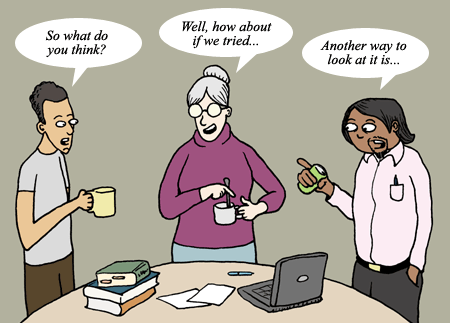
Diversity of perspectives (2 of 3)
A diverse community is better able to generate new research methods, explanations, and ideas.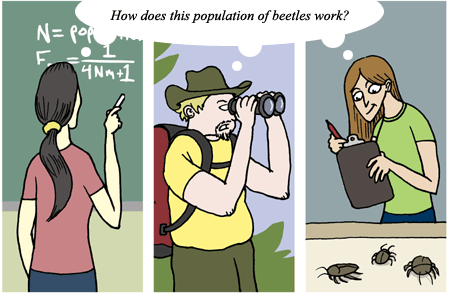
Diversity of perspectives (1 of 3)
People from different backgrounds may approach the same question in different ways.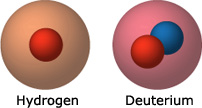
Deuterium
A hydrogen atom has only a single proton in its nucleus, whereas deuterium, a rarer isotope of hydrogen, has a proton and a neutron.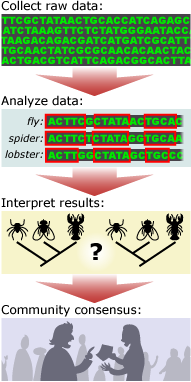
Dealing with data
Data become evidence only when they have been analyzed, interpreted, and ultimately shared with the scientific community.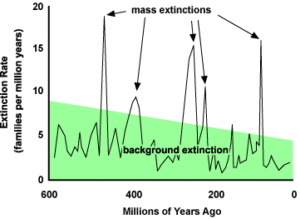
Extinctions
Percentage of organisms that have gone extinct over the past 200 million years, based on the fossil record.
Examining the source (2 of 2)
An original piece of scientific research may be interpreted many times over before it reaches you.
Examining the source (1 of 2)
When evaluating a media message about science, one of the first things to consider is where the information came from.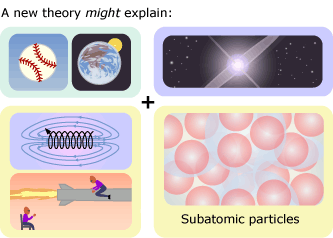
Even theories change (4 of 4)
General relativity seems up for a change. For example, it doesn't mesh with what we know about the interactions between extremely tiny particles. Will physicists develop a new theory that…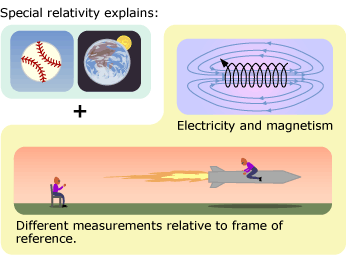
Even theories change (2 of 4)
Then classical mechanics was one-upped by Albert Einstein's theory of special relativity because it explained more phenomena.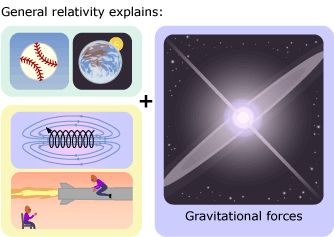
Even theories change (3 of 4)
Then special relativity was superseded by another theory, general relativity.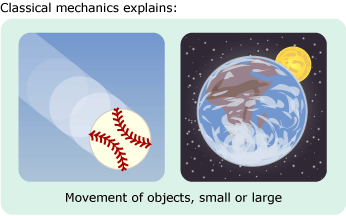
Even theories change (1 of 4)
Science is always a work in progress and even theories change. For example, in the 1600s classical mechanics was the accepted explanation of the movement of objects both in space…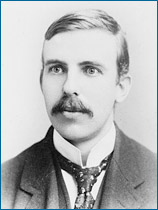
Ernest Rutherford
Library of Congress photo of Ernest Rutherford.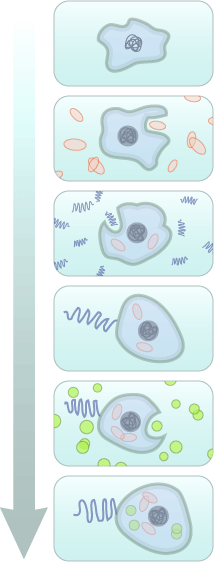
Episodes of endosymbiosis
A cartoon illustrating Margulis' idea that early bacteria experienced several episodes of endosymbiosis.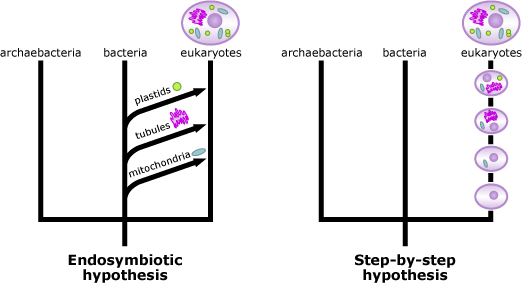
Endosymbiosis vs. step-by-step
Two opposing hypotheses: endosymbiosis vs. step by step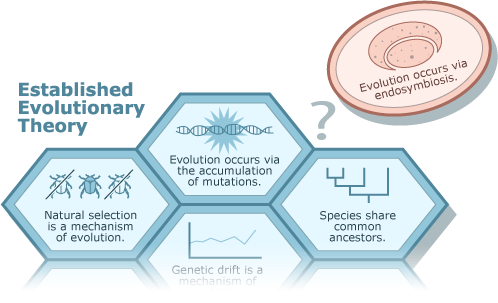
Endosymbiosis doesn’t fit with established theory
Endosymbiosis did not seem to fit with accepted evolutionary theory.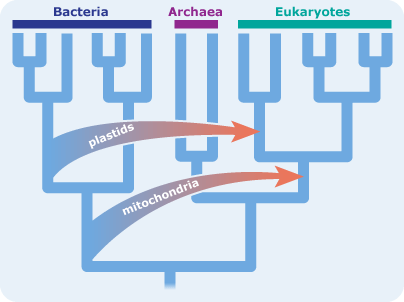
Endosymbiosis and the tree of life
A cartoon of endosymbiosis in which distinct cell lineages joined together to become a single organism.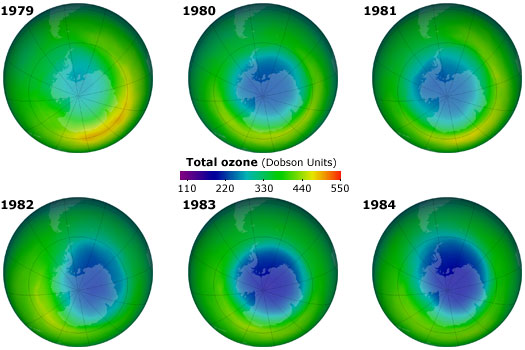
Growing hole in the ozone layer
These maps, generated from NASA satellite data, show the growing hole in the ozone layer over Antarctica for each October from 1979 to 1984.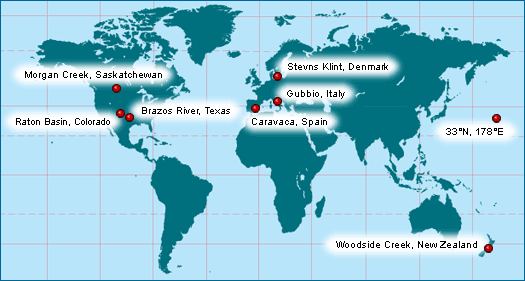
Global existence of the iridium anomaly
This world map shows some of the sites where an iridium anomaly at the KT boundary has been observed.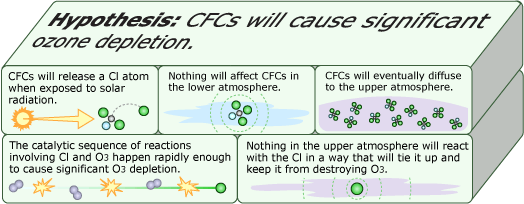
Hypothesis of ozone depletion
Molina and Rowland's over-arching hypothesis (that releasing CFCs into the atmosphere would cause significant ozone depletion) was based on many supporting hypotheses, backed by their own lines of evidence.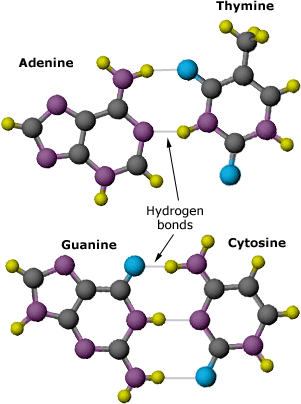
How the base pairs match up
Students are given six knowledge statements and asked to rank them according to how scientific they feel the statements are. A group discussion ensues. This activity is adapted from Scharmann…
Households items with CFCs
Examples of household items that used to contain CFCs.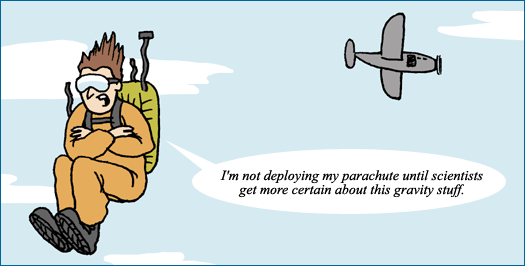
Is the scientific community’s confidence in the ideas accurately portrayed?
The tentative nature of science doesn't mean that scientific ideas are untrustworthy.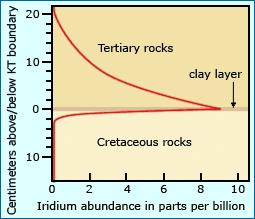
Iridium graph
A simplified graph showing iridium content across the KT boundary as measured at Gubbio, Italy.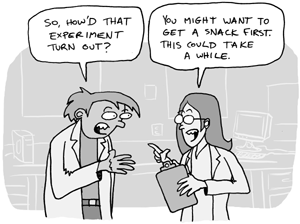
Interpreting the evidence
Interpreting the evidence relating to an idea is not always clear-cut.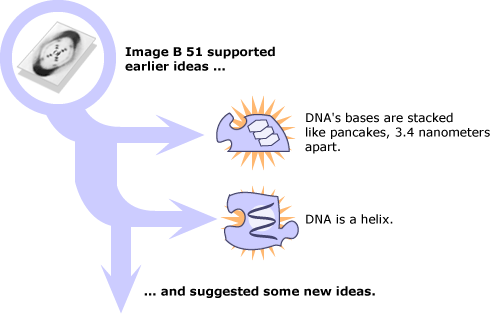
Image B 51
Franklin and Gosling's image confirmed the idea that DNA was helical in shape and that its bases were stacked pancake-style.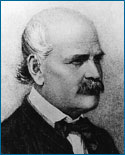
Ignaz Semmelweis
Photo of Ignaz Semmelweis.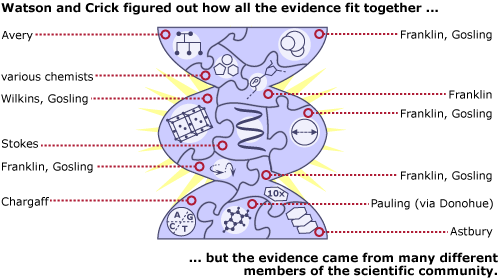
Puzzle piece (10 of 10) – Evidence for the structure of DNA
Watson and Crick figured out how all the evidence fit together but the evidence came from many different members of the scientific community.
Puzzle piece (9 of 10) – DNA bases
Correct hydrogen placement revealed the shapes of DNA's bases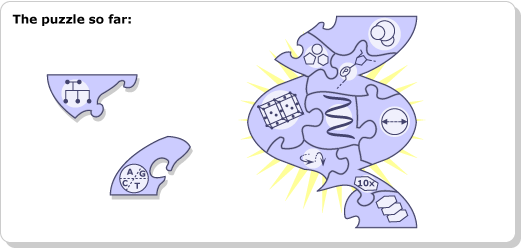
Puzzle piece (8 of 10) – DNA structure
The DNA puzzle after the addition of the stacked bases and helix diameter findings.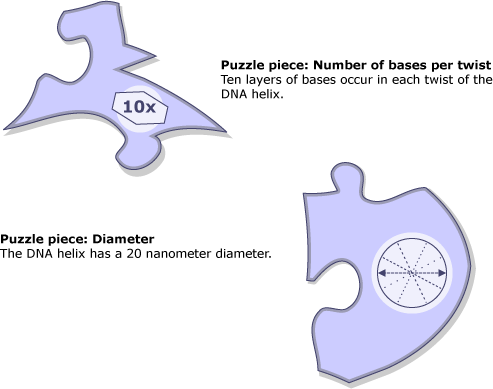
Puzzle piece (7 of 10) – DNA helix
Image B 51 also suggested the number of bases per twist and the diameter of the helix.
Puzzle piece (6 of 10) – DNA symmetry
DNA crystals look the same when turned upside down and backwards.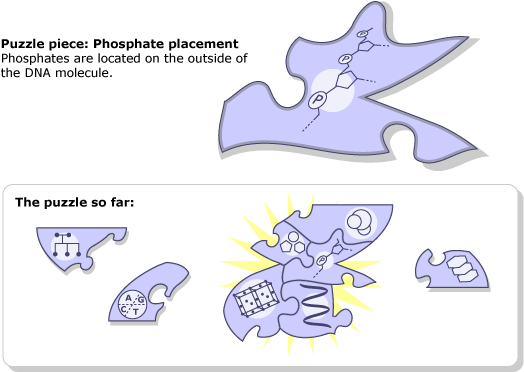
Puzzle piece (5 of 10) – DNA structure
Based on the ease with which DNA took up water, Franklin reasoned that the phosphates (which attract water) must be on the outside of the helix.
Puzzle piece (4 of 10) – DNA structure
Franklin and Gosling find that water molecules can cling to the DNA.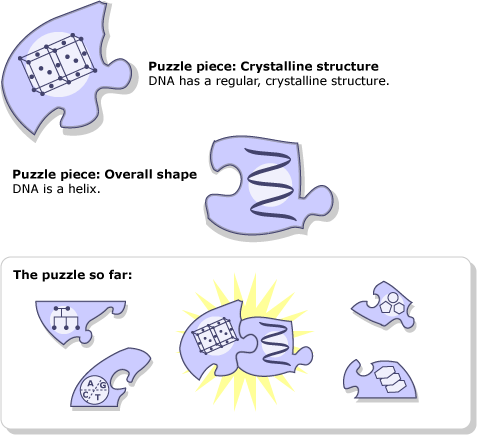
Puzzle piece (3 of 10) – DNA structure
DNA has a regular structure arranged in a helix.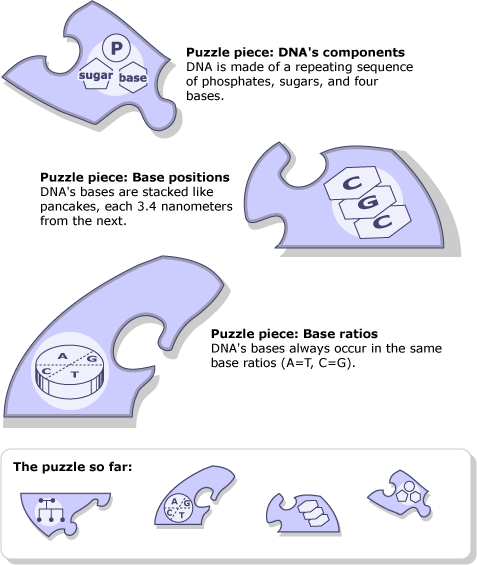
Puzzle piece (2 of 10) – DNA structure
DNA is composed of phosphates and sugars attached to nitrogenous bases, which are arranged in stacks and always have the same ratio.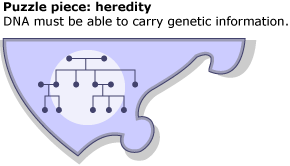
Puzzle piece (1 of 10) – heredity
DNA is the component of chromosomes that carries genetic information.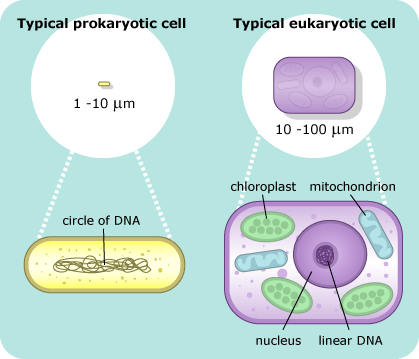
Prokaryotes and eukaryotes
Comparing prokaryotic and eukaryotic cells.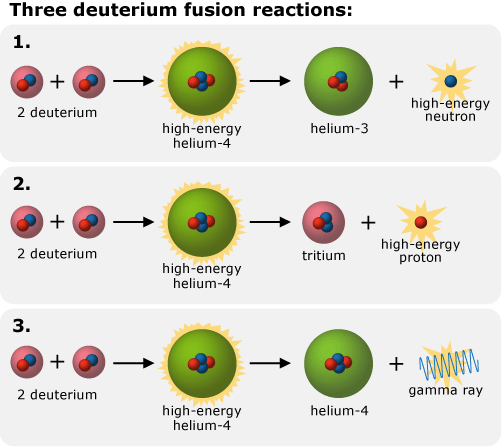
Products of deuterium fusion
According to nuclear theory, deuterium atoms fuse and forming helium-4 which has a lot of energy - so much energy that it is unstable, so the atom discharges some of…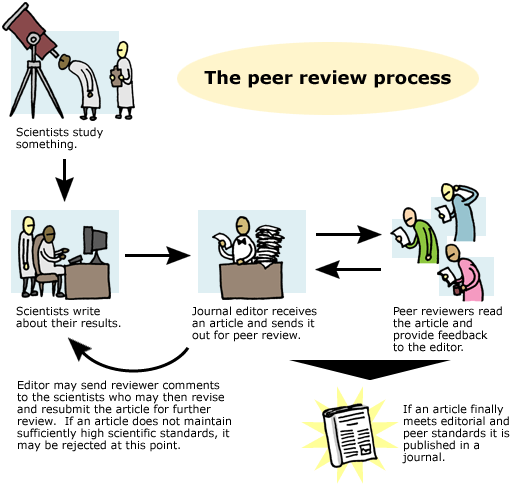
Peer review
Peer review of a scientific study submitted for publication provides assurance that someone who knows what they're doing has double-checked it.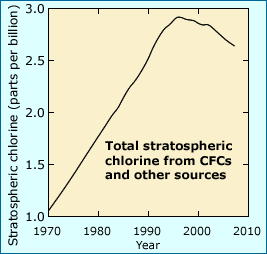
Ozone recovery
With the CFC ban in place, atmospheric levels of chlorine are beginning to decline.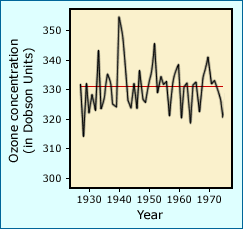
Ozone fluctuation
Ozone levels fluctuate so widely that it is difficult to detect subtle trends over a short-term period, as shown by these ozone measurements for the atmosphere over Switzerland taken between…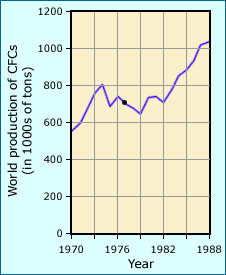
Ozone depletion – CFC phaseout
A graph showing world production of three major CFC types between 1970 and 1988. The dot marks the year (1977) that the US phaseout of CFCs was announced.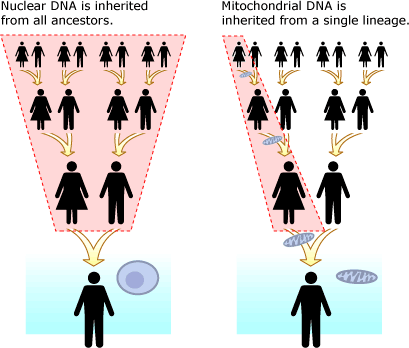
Nuclear vs. mitochondrial DNA
Unlike nuclear DNA (left), mitochondrial DNA is only inherited from the maternal lineage (right) - a quirk which allowed Margulis to determine whether mitochondrial DNA encoded unique traits.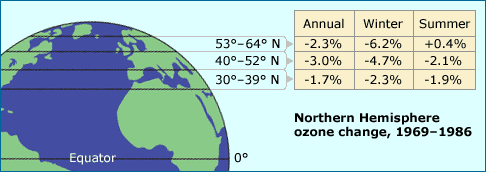
Northern hemisphere ozone change
Change in the amount of ozone in the Northern Hemisphere over a 17-year period. Note the large decline in ozone during the winter months and how the winter decline is…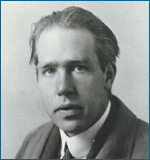
Niels Bohr
Photo of Niels Bohr.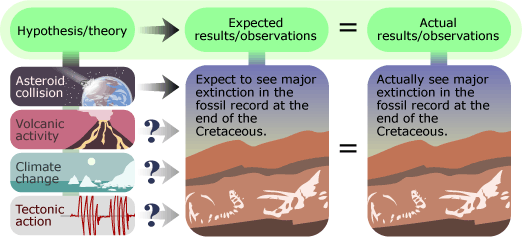
Multiple explanations for the extinction of dinosaurs
The evidence supports the idea that a giant asteroid struck Earth at the end of the Cretaceous, but additional explanations (volcanic activity, global climate change, sea level change, and tectonic…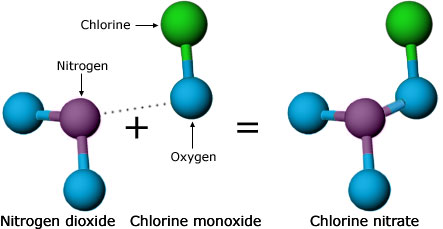
Molecular structure of chlorine nitrate
In the presence of another molecule to serve as a catalyst (not shown), nitrogen dioxide (NO2) and chlorine monoxide (ClO), a byproduct of the breakup of ozone molecules by CFCs,…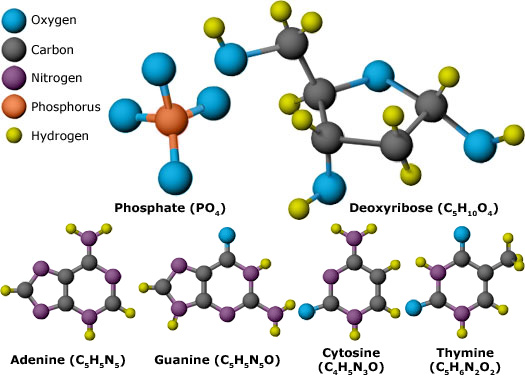
Molecular components of DNA
The molecular components of DNA: phosphates, deoxyribose (a sugar), and the four nitrogenous bases, adenine, guanine, cytosine, and thymine.
Misconduct – cartoon 2
Serious and damaging cases of scientific misconduct are almost invariably found out.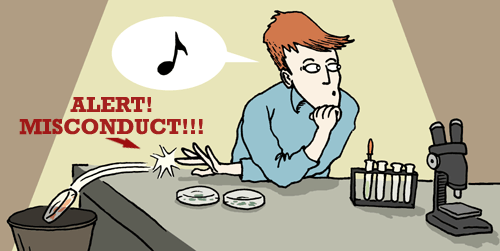
Misconduct – cartoon 1
Overlooking data is frowned upon!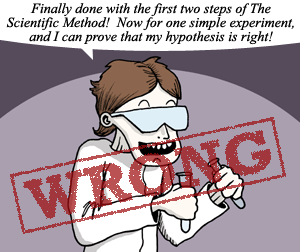
Misconceptions about science
This cartoon portrays several misconceptions about science and scientists.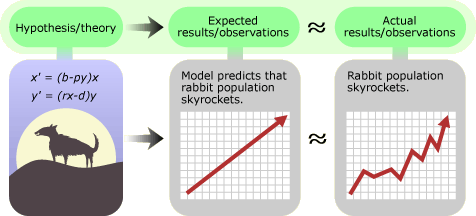
Mathematical models (2 of 2)
Models are based on sets of hypotheses about how a system works.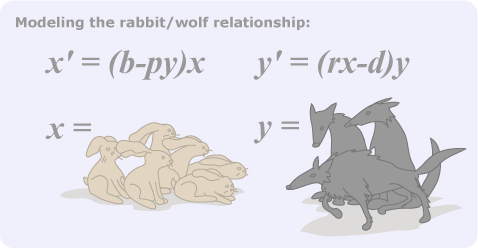
Mathematical models (1 of 2)
Mathematical models of a species interaction can be both simple or complex.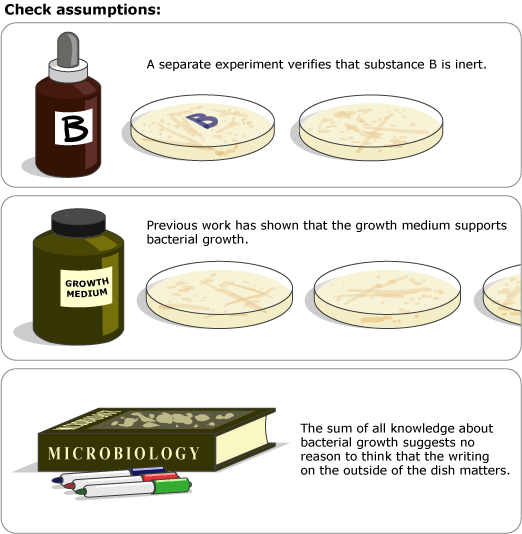
Making assumptions (2 of 2)
All tests involve assumptions, but most of these are assumptions can be verified separately.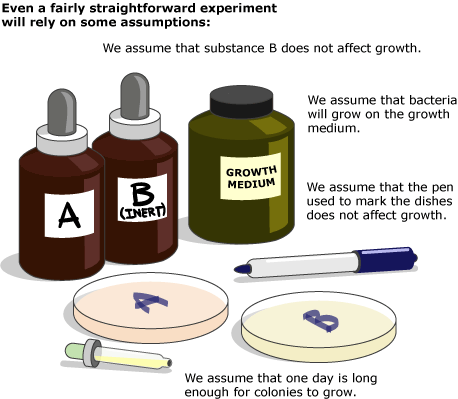
Making assumptions (1 of 2)
Much as we might like to avoid it, all scientific tests involve making assumptions - many of them justified.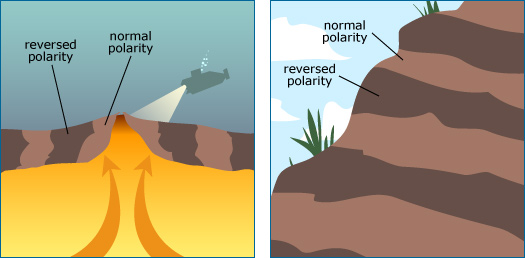
Magnetic flip-flops
As new seafloor forms, the igneous rock records the current state of the Earth's magnetic field. Sedimentary rock layers forming at the bottom of the ocean may also record these…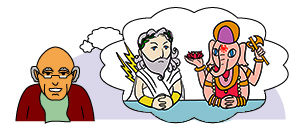
Limits of science (4 of 4)
Science doesn't draw conclusions about supernatural explanations.
Limits of science (3 of 4)
Science doesn't tell you how to use scientific knowledge.
Limits of science (2 of 4)
Science doesn't make aesthetic judgements.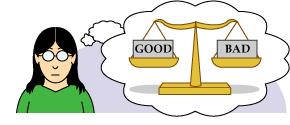
Limits of science (1 of 4)
Science doesn't make moral judgements.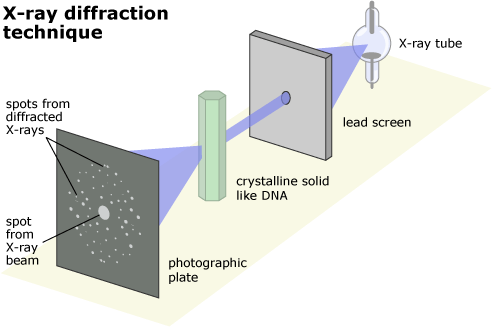
X-ray diffraction
X-ray diffraction was a tool developed in the first half of the 20th century to infer atomic structure.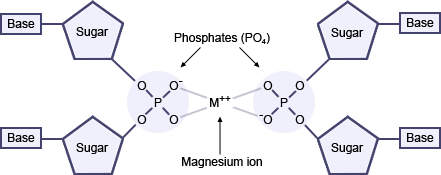
Watson and Crick’s first model of DNA
Watson and Crick's model erroneously placed the bases on the outside of the DNA molecule with the phosphates, bound by magnesium or calcium ions, inside.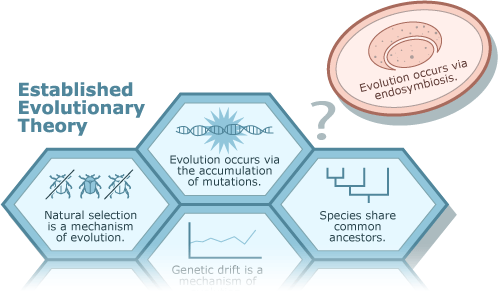
Updating evolutionary theory
Endosymbiosis did not seem to fit with accepted evolutionary theory.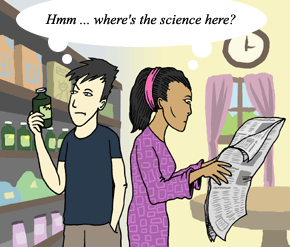
Untangling media messages
Media representations of science and science-related policy are essential for quickly communicating scientific messages to the broad public; however, some important parts of the scientific message can easily get lost…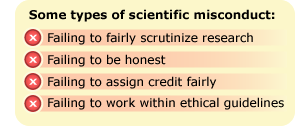
Types of misconduct
Some types of misconduct.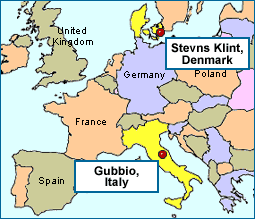
Two sites showing the iridium anomaly
Gubbio, Italy and Stevns Klint, Denmark - sites that confirmed the widespread presence of an iridium anomaly.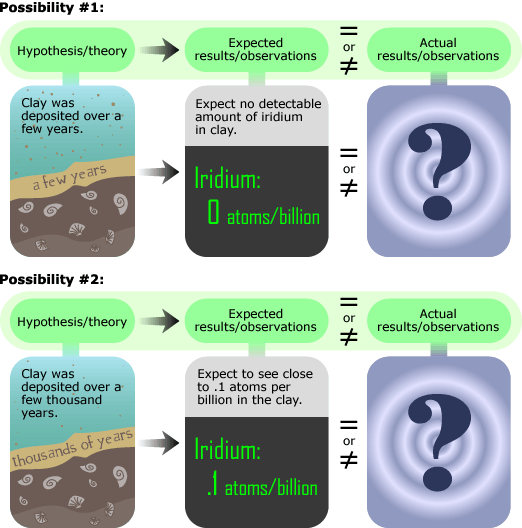
Two hypotheses for the rate of deposition
Alvarez posed two hypotheses: either the clay was deposited over a few years and he would find no iridium, or over a few thousand years and the iridium would definitely…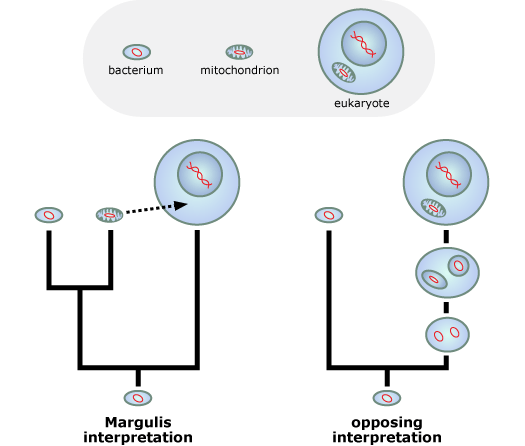
Two explanations for the shape of mitochondrial DNA
Two interpretations of the circular shape of the DNA in mitochondria.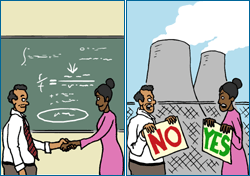
True scientific controversy (4 of 4)
This is not a conflict over a scientific idea, but over how such ideas should be applied.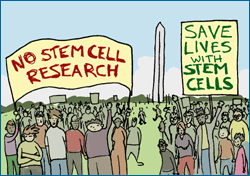
True scientific controversy (3 of 4)
Disagreement within the scientific community or society at large over the appropriateness of a method used for scientific research.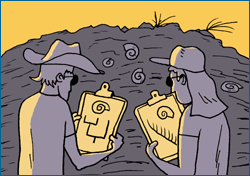
True scientific controversy (2 of 4)
Scientists disagreeing about a less central aspect of a scientific idea.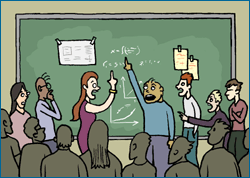
True scientific controversy (1 of 4)
Scientists disagreeing about a central hypothesis or theory.
Thymine and guanine
The visiting American chemist, Jerry Donohue, provided a key piece of evidence when he revealed that the forms given for thymine and guanine in most textbooks were wrong. Note the…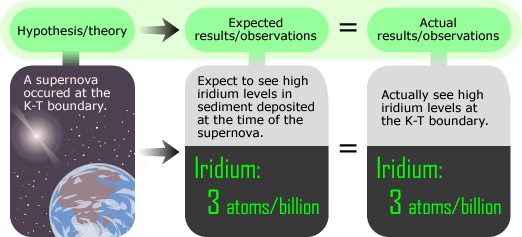
The supernova hypothesis
An existing hypothesis proposed that a supernova at the end of the Cretaceous had caused the extinction of dinosaurs. Supernovas throw off heavy elements like iridium - so the hypothesis…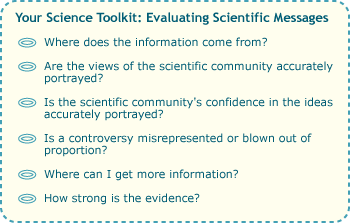
The science toolkit
A set of questions for evaluating scientific messages.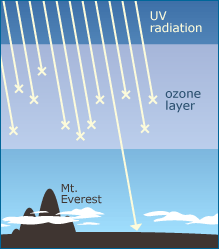
The ozone layer
The ozone layer protects Earth from dangerous UV radiation.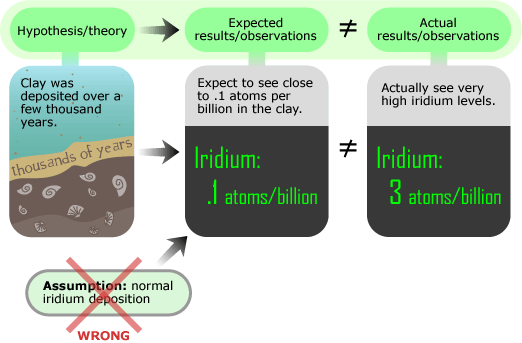
The iridium anomaly
The results of the iridium analysis were surprising. The team found more than 30 times what they had expected.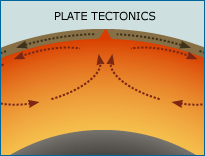
The argument for plate tectonics (6 of 6)
We would expect to find a plausible mechanism by which the continents could have moved.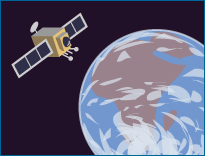
The argument for plate tectonics (5 of 6)
We would expect to find direct evidence of ongoing tectonic movement through sensitive satellite measurements.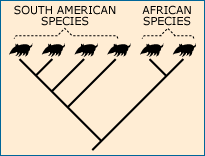
The argument for plate tectonics (4 of 6)
We would expect to find that the evolutionary relationships among non-marine species reflect the ancient supercontinental break up.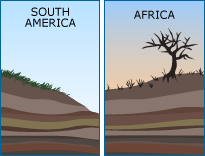
The argument for plate tectonics (3 of 6)
We would expect to find that rock layers and geological features on now distant continents match up where they were once joined.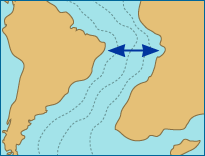
The argument for plate tectonics (2 of 6)
We would expect to find that the continents are shaped in ways that could have once fit together.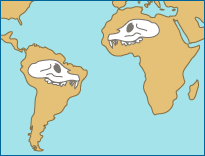
The argument for plate tectonics (1 of 6)
Powerful scientific ideas generate many different expectations, not just one. As an example, let's return to the idea that the continents as we know them today were once joined together…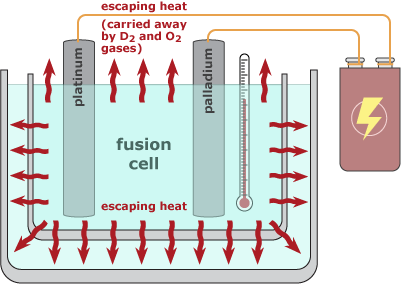
The fusion cell (3 of 3)
To really know how much heat is being produced by the fusion cell it is necessary to estimate how much heat is escaping from it.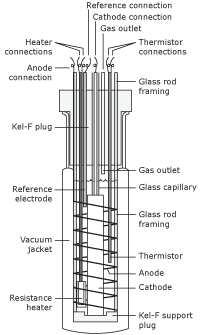
The fusion cell (2 of 3)
A detailed diagram of Pons and Fleischmann's cold fusion cell from one of their published papers.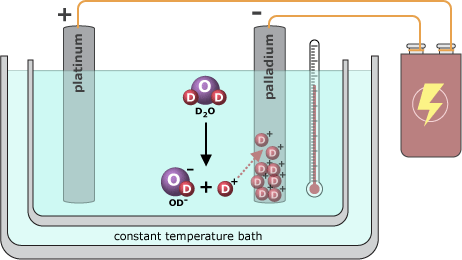
The fusion cell (1 of 3)
Pons and Fleischmann put together what they called a "fusion cell."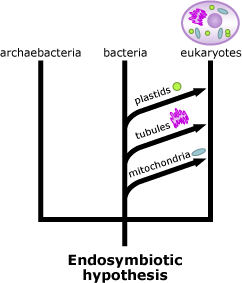
The endosymbiotic hypothesis
Margulis' endosymbiotic hypothesis.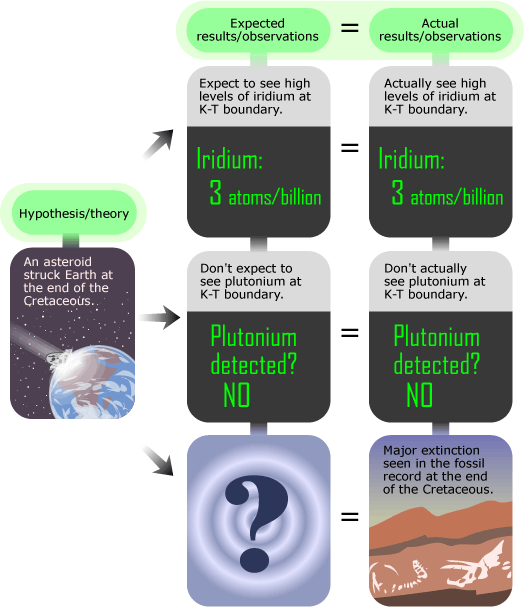
The asteroid hypothesis
The team came up with a new idea: an asteroid impact - which would explain the iridium and the lack of plutonium - but not why the extinctions.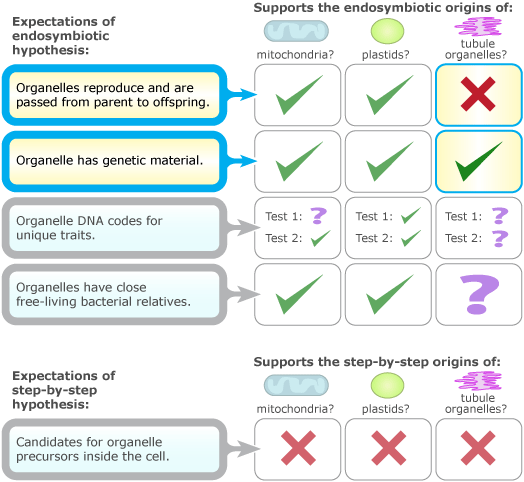
Testing the two hypotheses (4 of 4)
A group of scientists showed that if you remove tubule organelles from a eukaryotic cell, they can grow back. This discovery argued against the idea that these organelles evolved via…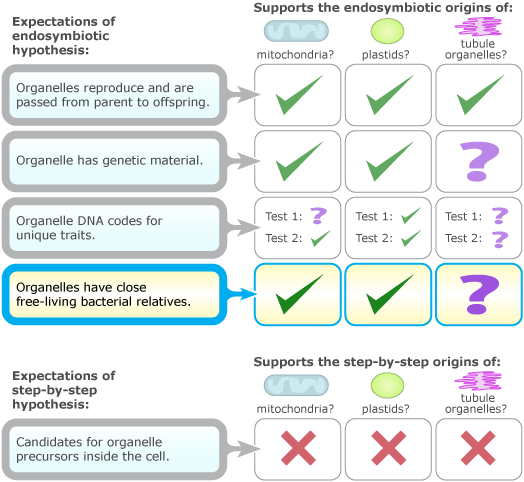
Testing the two hypotheses (3 of 4)
New sequencing technologies leads to the evidence that both mitochondrial and plastid DNA are more similar to bacterial DNA.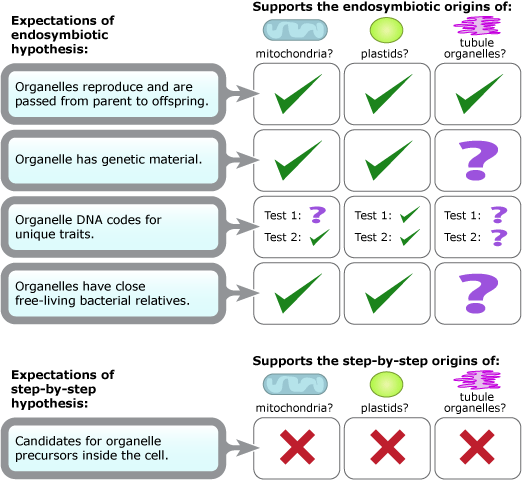
Testing the two hypotheses (2 of 4)
Examining the evidence for two hypotheses: the endosymbiotic or step-by-step origins of mitochondria, plastids, and tubule organelles.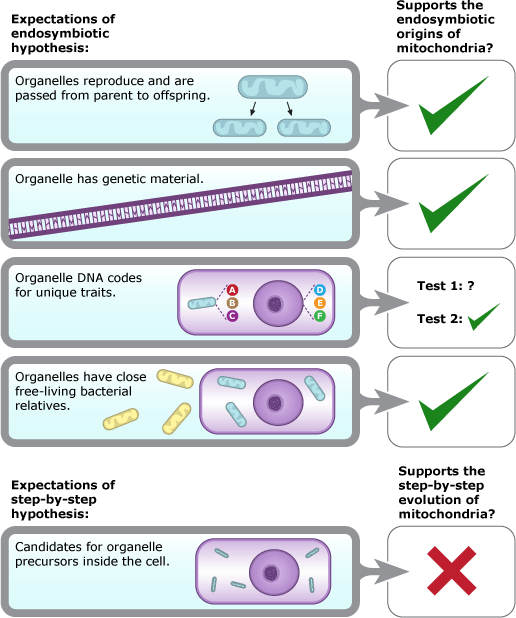
Testing the two hypotheses (1 of 4)
Comparing the evidence for two opposing hypotheses.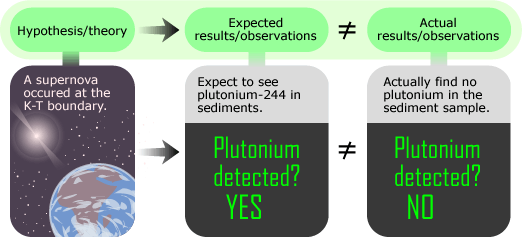
Testing the supernova hypothesis
To further test the supernova hypothesis:If a supernova had occurred, it would have also released plutonium-244 as well as iridium. Original tests looked positive but replicating the analysis showed that…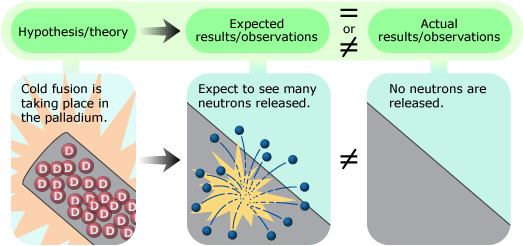
Testing the idea of cold fusion (6 of 6)
Testing the hypothesis: If cold fusion is taking place, we would also expect to see many neutrons released.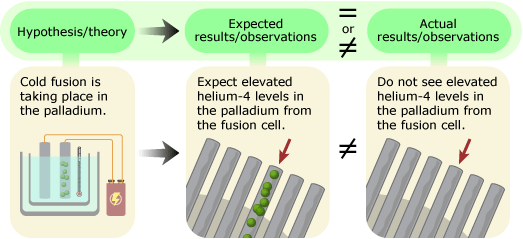
Testing the idea of cold fusion (5 of 6)
Testing the hypothesis: If cold fusion is taking place, we would expect elevated levels of helium-4 in the palladium rod.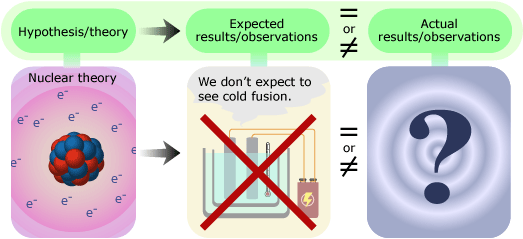
Testing the idea of cold fusion (4 of 6)
Testing the hypothesis: Could cold fusion really be taking place, or had Pons and Fleischmann made a mistake?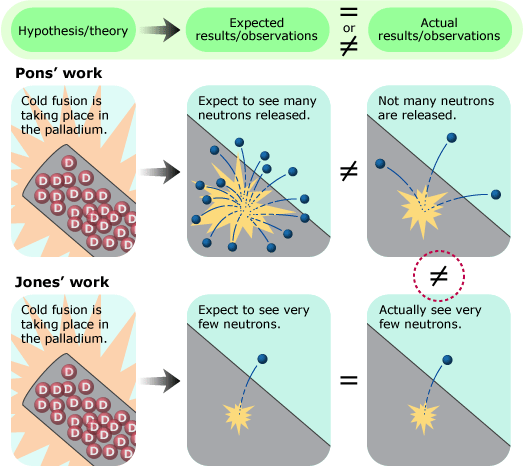
Testing the idea of cold fusion (3 of 6)
Pons' neutron results didn't agree with his heat measurements, with Jones' neutron results, or with established nuclear theory, which suggested no fusion should be occurring at all!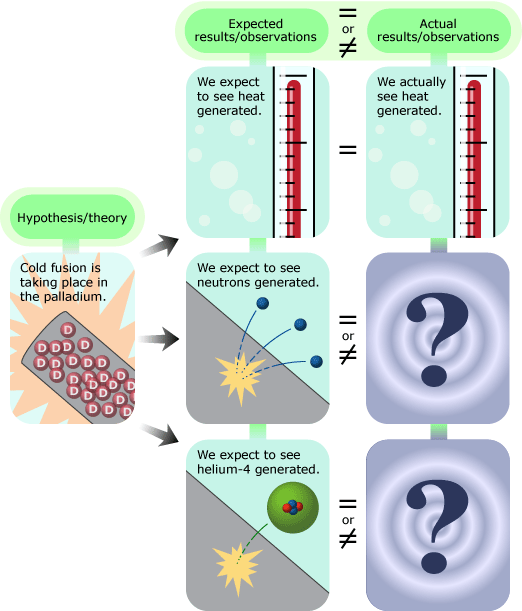
Testing the idea of cold fusion (2 of 6)
Testing the hypothesis: If cold fusion is taking place, we would also expect to neutrons or helium-4 generated.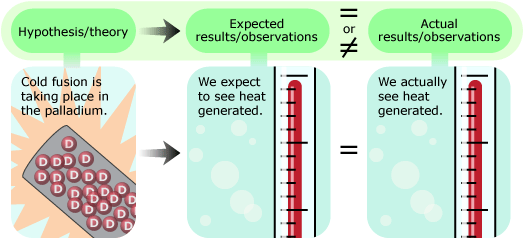
Testing the idea of cold fusion (1 of 6)
Testing the hypothesis: If cold fusion is taking place, then we would expect to see heat generated.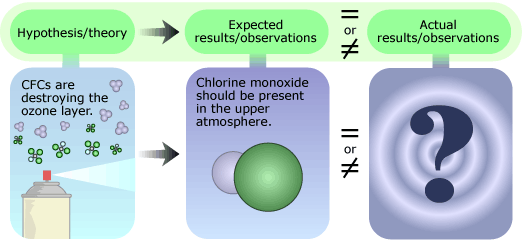
Testing the hypothesis of ozone depletion (3 of 3)
Chlorine monoxide is one of the products of ozone destruction. Since there is no other known source of chlorine monoxide, finding this chemical in the upper atmosphere would strongly support…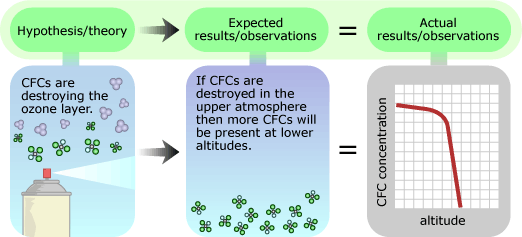
Testing the hypothesis of ozone depletion (2 of 3)
If CFCs are destroying the ozone layer, then we would expect/predict that more CFCs will be present at lower altitudes.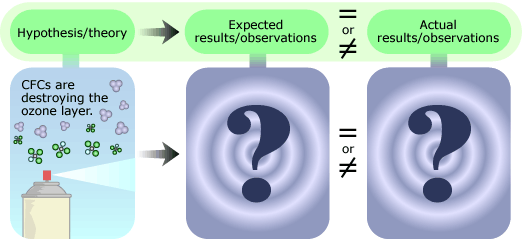
Testing the hypothesis of ozone depletion (1 of 3)
Molina and Rowland needed to test their ideas with actual atmospheric evidence, but figuring out just what evidence to look for was tricky.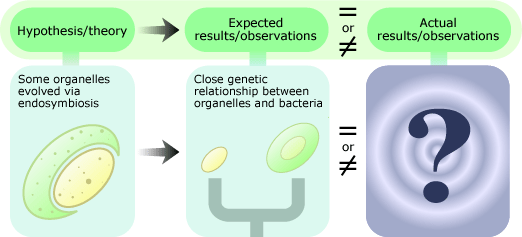
Testing the endosymbiotic hypothesis
Testing the hypothesis: If some organelles evolved via endosymbiosis, we would expect to see a close genetic relationship between the organelles and bacteria.
Testing scientific ideas
Scientific testing occurs in two logical steps: (1) if the idea is correct, what would we expect to see, and (2) does that expectation match what we actually observe? Ideas…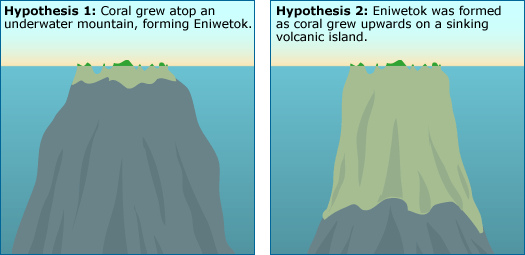
Testing hypotheses (2 of 2)
Two hypotheses - which is the better explanation?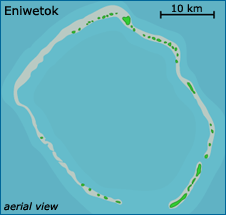
Testing hypotheses (1 of 2)
The atoll Eniwetok (Anewetak) in the Marshall Islands - an oceanic ring of exposed coral surrounding a central lagoon.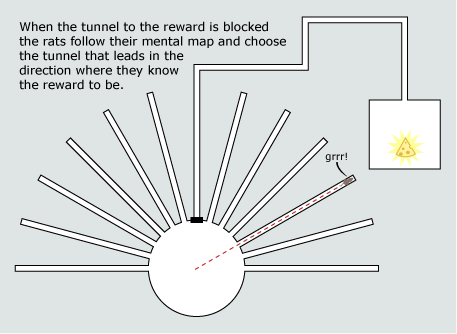
Testing an idea (3 of 3)
When the entrance to the reward tunnel was blocked, most of the rats picked a tunnel that led in the direction of the food, supporting the idea that rats navigate…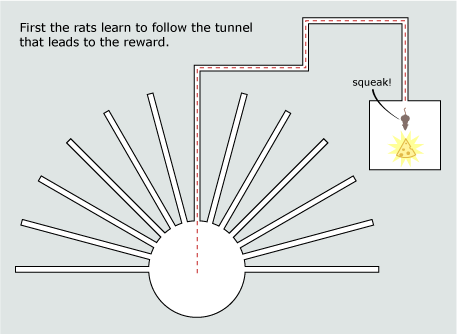
Testing an idea (2 of 3)
Tolman and his colleagues trained rats in a maze which offered them many different tunnels to enter first. One of the tunnels twisted and turned but consistently led to the…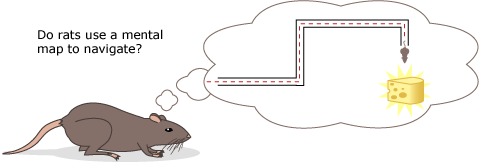
Testing an idea (1 of 3)
Psychologist Edward Tolman wanted to know how rats successfully navigate their surroundings - for example, a maze containing a hidden reward. Would they build mental maps of the maze as…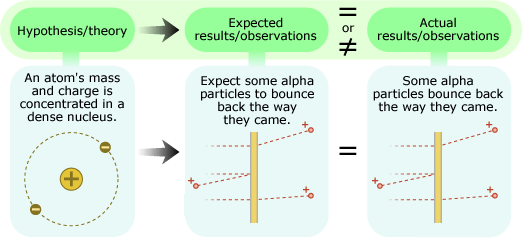
Rutherford’s argument (1 of 2)
In the early 1900s, Ernest Rutherford and his colleagues performed this experiment to test the hypothesis that an atom's mass and positive charge are spread diffusely throughout the atom and…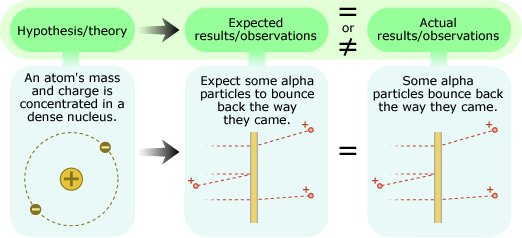
Rutherford’s argument (2 of 2)
Rutherford constructed a new scientific argument.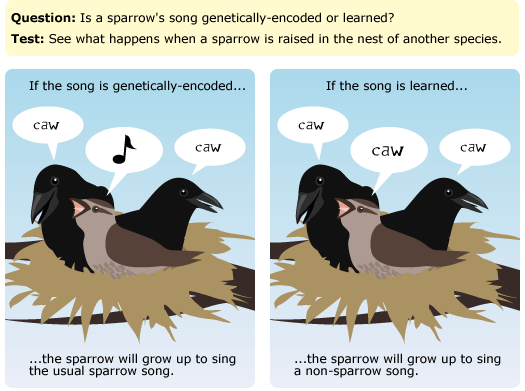
Testable ideas
A scientific idea may require a lot of reasoning to work out an appropriate test, but to be scientific, an idea must be testable.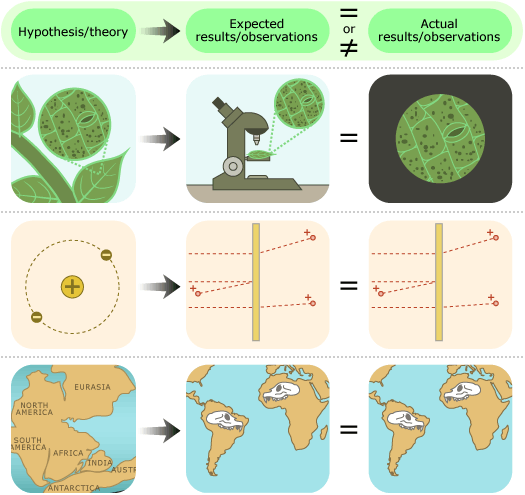
Summing up scientific arguments
Scientific arguments are formed by figuring out what we would expect to observe if a particular idea were true and then checking those expectations against what we actually observe. A…
Sources of scientific information (3 of 3)
Look for sources that provide a list of citations.
Sources of scientific information (2 of 3)
Avoid websites from groups that might have ulterior motives.
Sources of scientific information (1 of 3)
Find sources with scientific expertise.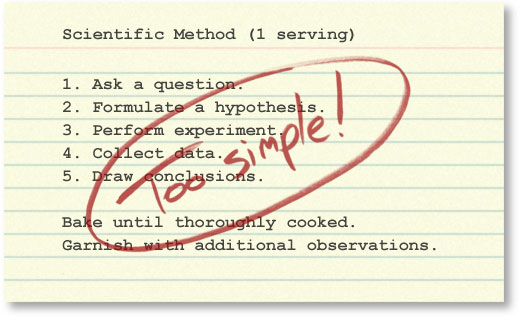
Scientific method
Science is complex and cannot be reduced to a single, prepackaged recipe.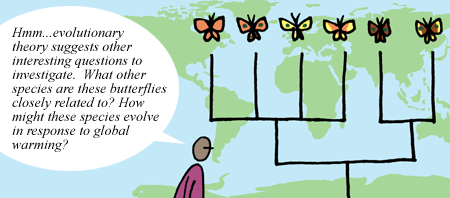
Scientific explanations (3 of 3) – over-arching theories
Over-arching theories are particularly important and reflect broad understandings of a particular part of the natural world.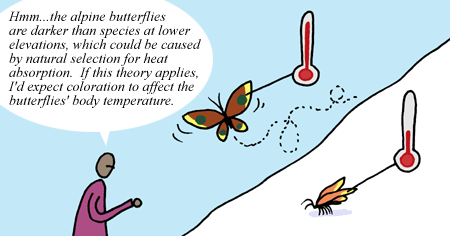
Scientific explanations (2 of 3) – theories
Theories are broad explanations for a wide range of phenomena. They are concise, coherent, systematic, predictive, and broadly applicable.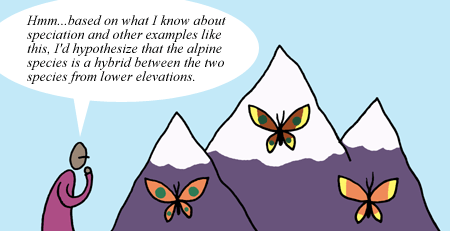
Scientific explanations (1 of 3) – hypotheses
Hypotheses are proposed explanations for a fairly narrow set of phenomena, usually based on prior experience, scientific background knowledge, preliminary observations, and logic.
Scientific culture (4 of 4) – ethics
Scientists adhere to ethical guidelines.
Scientific culture (3 of 4) – credit
Scientists give credit where credit is due.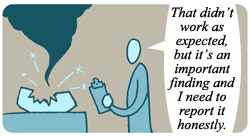
Scientific culture (2 of 4) – honesty
Scientists expect other scientists to act with honesty and integrity.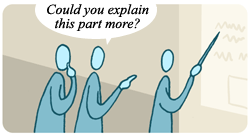
Scientific culture (1 of 4) – scrutiny
In science, all ideas must stand up to rigorous scrutiny.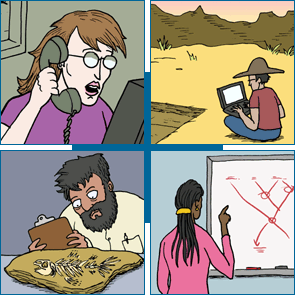
Scientific community
Scientists sometimes work alone and sometimes work together, but communication within the scientific community is always important.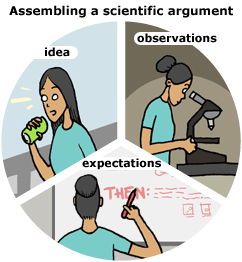
Scientific arguments (2 of 2)
Though the elements of a scientific argument are always related in the same logical way, those elements may be assembled in different orders.Scientific arguments (1 of 2)
Taken together, the expectations generated by a scientific idea and the actual observations relevant to those expectations form what we'll call a scientific argument.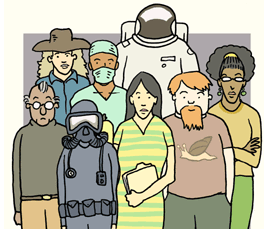
Science is a community endeavor
Science simply works better when lots of different sorts of people participate in it.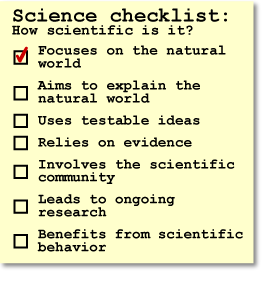
Science Checklist
This checklist provides a guide for what sorts of activities are encompassed by science.
Science and technology working together
Scientific knowledge allows us to build new technologies, which often leads to new ideas, which inspires new technologies and so on.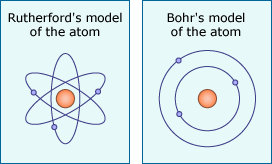
Rutherford and the atom (4 of 4)
Rutherford published a description of his idea, which was later modified by Niels Bohr.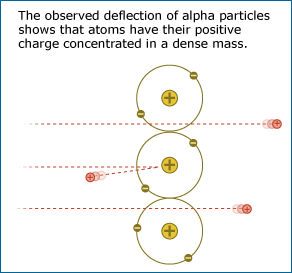
Rutherford and the atom (3 of 4)
Most of the alpha particles passed through the gold foil without changing direction much as expected, but some came bouncing back in the opposite direction.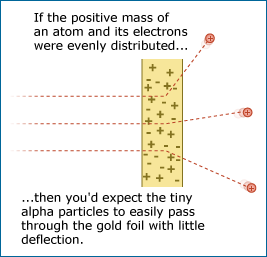
Rutherford and the atom (2 of 4)
By firing alpha particles through gold foil, Rutherford was able to test ideas about the interior of the atom.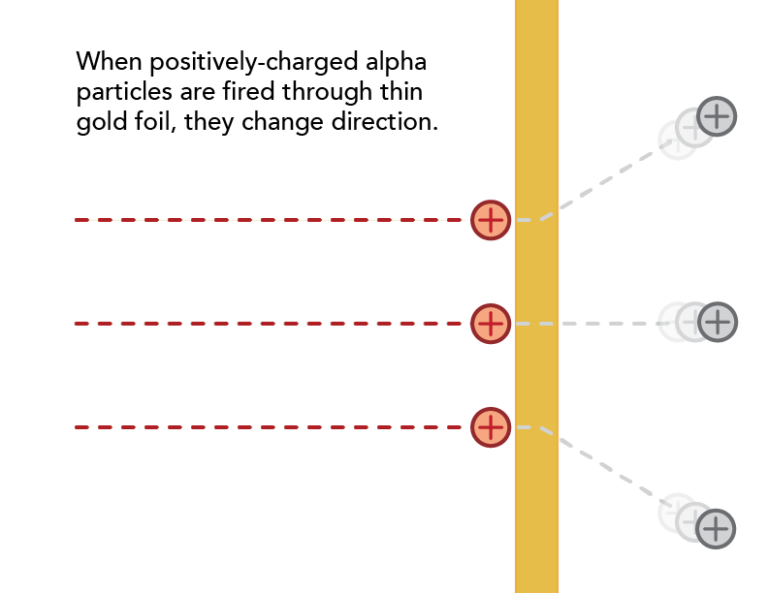
Rutherford and the atom (1 of 4)
Ernest Rutherford used alpha particles (helium atoms stripped of their electrons) to learn about the structure of the atom.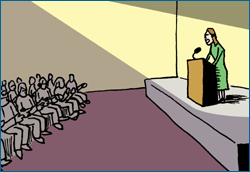
Roles of the scientific community (4 of 4)
Members of the scientific community may serve as cheerleader/taskmaster to motivate fellow scientists.
Roles of the scientific community (3 of 4)
Members of the scientific community may also serve as watchdog/whistleblower to eliminate bias and fraud by keeping watchful eye.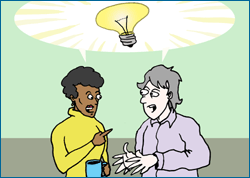
Roles of the scientific community (2 of 4)
Members of the scientific community also serve as innovator/visionary by generating new ideas.
Roles of the scientific community (1 of 4)
One of the roles of members of the scientific community is to serve as fact checkers/critics.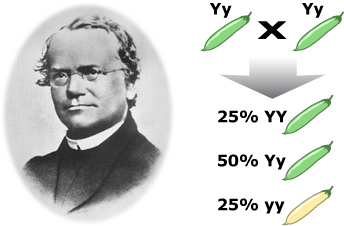
Revisiting Mendel
Gregor Mendel (left) showed that if you know the genotypes of the parents in a cross, you can predict the ratios of different offspring genotypes (right).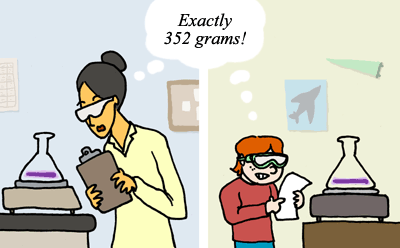
Replication
Scientists aim for their studies' findings to be replicable.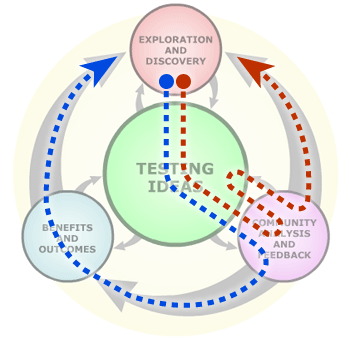
Real process of science (3 of 3)
The process of science is not predetermined.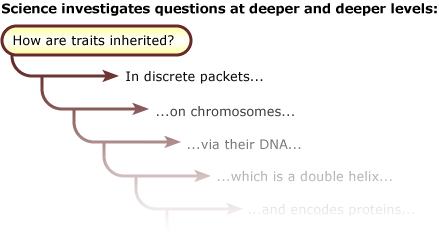
Real process of science (2 of 3)
Successive investigations of a topic often lead back to the same question, but at deeper and deeper levels.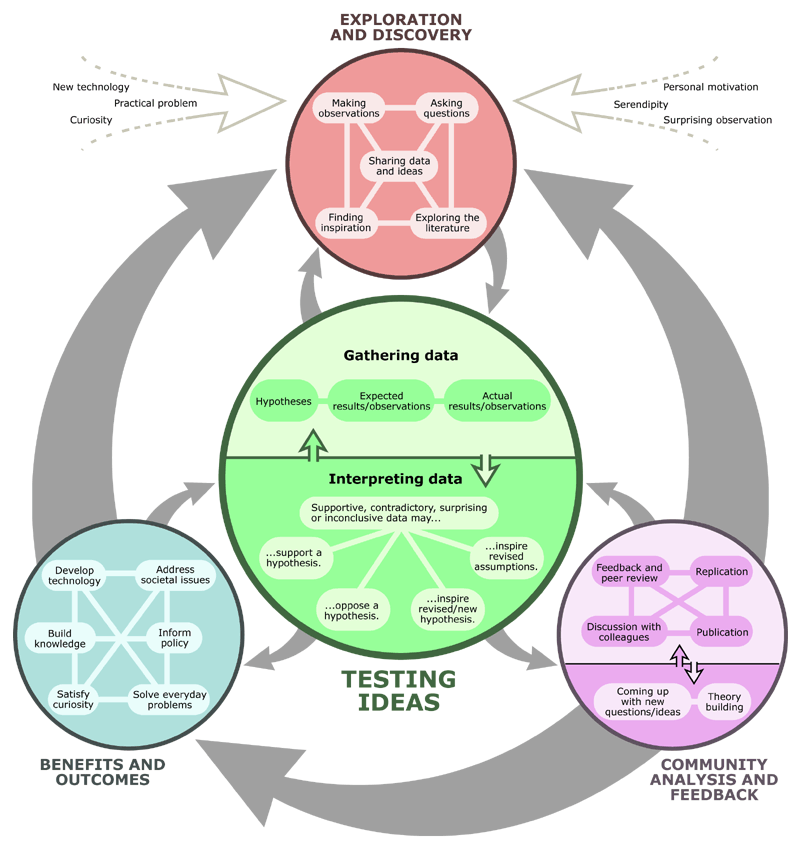
Real process of science (1 of 3)
In contrast to the linear steps of the simplified scientific method, the process of science is non-linear.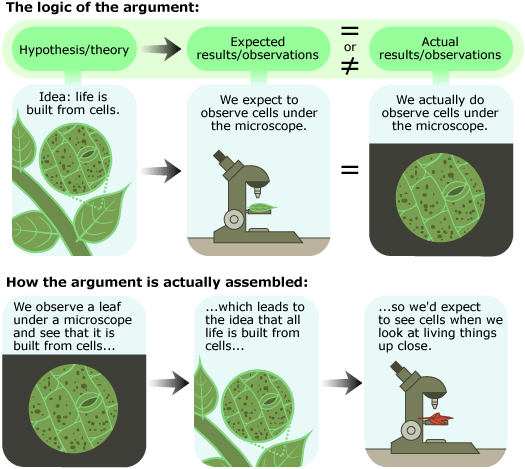
Building a scientific argument ‐ different order
Though the structure of this argument is consistent (hypothesis, then expectation, then actual observation), its pieces may be assembled in different orders.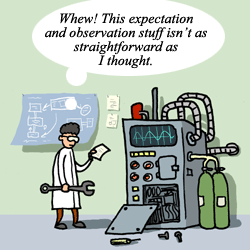
Building a scientific argument – cartoon 2
Building a scientific argument is hard work.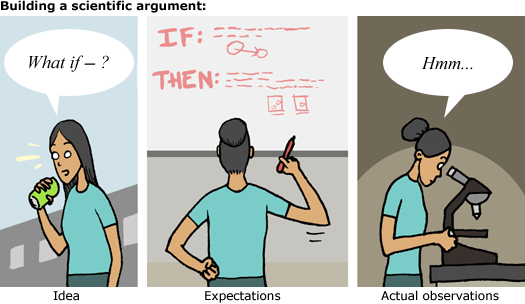
Building a scientific argument – cartoon 1
Scientific arguments involve three components: the idea (a hypothesis or theory), the expectations generated by that idea (frequently called predictions), and the actual observations relevant to those expectations (the evidence).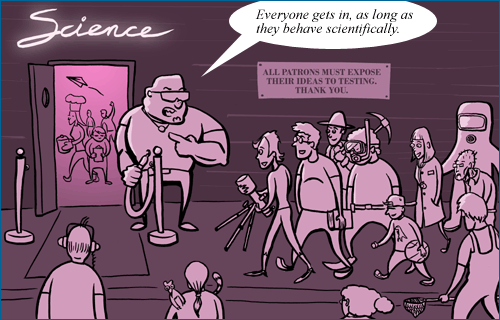
Behaving scientifically
Science is open to anyone and benefits tremendously from the expanding diversity of perspectives. However, science only works because the people involved with it behave "scientifically."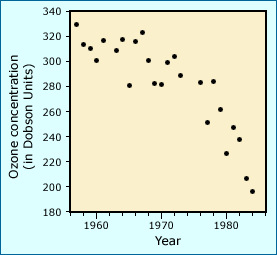
Average ozone levels
The graph shows the average October ozone levels recorded by Farman's group at Halley Bay from 1957 through 1984.
A community enterprise (5 of 5) – fraud
Though fraud is rare in science, it sometimes happens, but are identified through the scrutiny of the scientific community.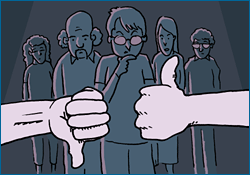
A community enterprise (4 of 5) – balancing bias
Because of the scientific community's diversity, individual biases are balanced out.
A community enterprise (3 of 5) – evaluation
Scientists present their work to others for evaluation.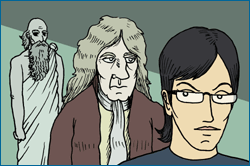
A community enterprise (2 of 5) – cumulative knowledge
The scientific community provides the cumulative knowledge base on which science is built.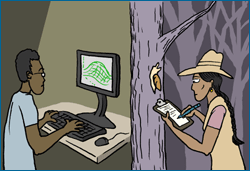
A community enterprise (1 of 5) – collaboration
Collaborations and division of labor are increasingly important today, as our scientific understanding, techniques, and technologies expand.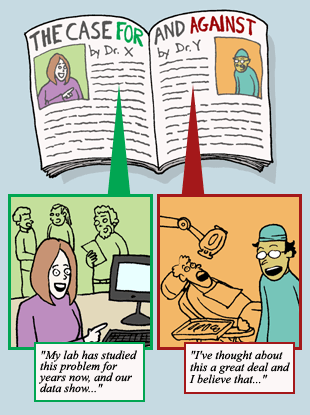
Balanced reporting (2 of 2)
In untangling conflicting viewpoints in the media, it pays to investigate each person's area of expertise.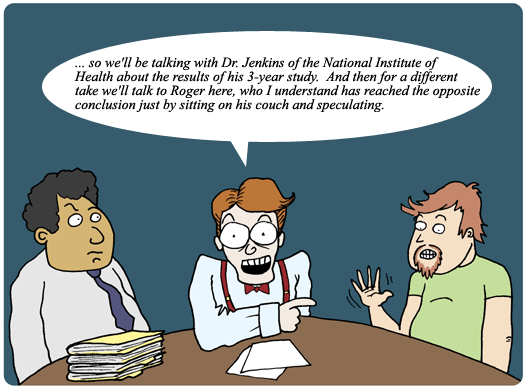
Balanced reporting (1 of 2)
The public should be able to get information on all sides of an issue but that doesn't mean that all sides of the issue deserve equal weight.